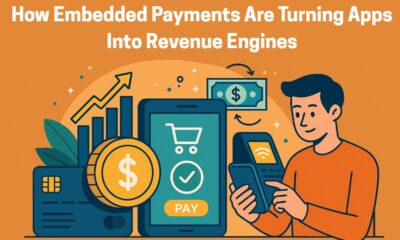Digital Marketing
How to Calculate Conversion Rate: Formula for Conversion Rate

Perhaps no phrase is used by marketers more often than conversion rate. And with good reason: conversion rate is important for an internet company.
If you know how to compute conversion rates and keep track of them, you can:
- Scale advertising expenditure predictably
- Hire salespeople.
- Determine your profit potential.
- More effectively allocate resources
- And there’s a lot more!
However, failing to understand how to compute conversion rates might lead to disaster.
You might wind up spending too much for your leads and sales, effectively marketing yourself out of business. When it comes to conversion rates, ignorance is not bliss; it’s a recipe for disaster.
To summarize, understanding how to calculate conversion rate and how to enhance it is a necessary ability for marketers. Also, don’t take our word for it. One of the most significant marketing KPIs is conversion rate. It’s a statistic by which lead generation marketers are judged, from practitioners to CMOs.
It’s critical to increase your conversion rates. The cornerstone of large sales volume is a solid conversion rate.
Like most people, you could have guilty for neglecting the arithmetic going on in the background and instead focusing on monitoring conversion modifications over time.
This is a mistake.
You should understand the reasoning behind the metrics you’re measuring as a marketer. Slowing down and thinking about what’s going on might help you see process improvements, conversion optimization approaches, and possibilities you would have overlooked otherwise!
This article will teach you all you need to know about calculating the conversion rate for your website, whether you’re new to marketing or a seasoned digital veteran. We are hoping it will provide you with a foundation for calculating conversion rate and using it to build your company. Don’t forget that you can always use Creabl’s conversion rate optimization platform as well.
Conversion Rate Definition
A conversion rate is simply the proportion of visitors to a website or page that fulfill a certain objective.
So, what might the objective be?
Among the most typical conversion objectives are:
- Buying anything
- Information submission (a lead)
- contacting a company
- Signing up for a newsletter and setting up an account
- Obtaining an asset
- Interacting with your website
The type of your company will influence whatever conversion target you choose. While an e-commerce site like Casper or Quip might benefit from a purchase goal, a content site like Nerdwallet or Mindbodygreen would benefit from a goal like signing up for a subscription.
You need to treat conversions in an especially thoughtful way – they explicitly differentiate between macro and micro conversions.
- A key purpose is to convert macros (such as selling a product or getting a quote)
- A micro conversion is a goal that helps you get closer to your main objective (adding a product to your cart or signing up for a mailing list)
So far, it’s been pretty straightforward, huh? Let’s keep moving forward.
How to Work Out Your Conversion Rate
Let’s get started calculating the magic number now that we’ve covered the basics of conversion rate and established some common objectives.
So, how do you figure out the conversion rate?
Use the following three conversion rate formulas:
- Conversion Rate = Number of conversions divided by the number of sessions multiplied by 100
- Conversion Rate = Number of conversions divided by the number of unique visits multiplied by 100
- Conversion Rate = Number of conversions divided by the number of leads multiplied by 100
Note that all three formulae are correct. The ideal method for calculating conversion rate is determined by what you define as a conversion event and how you want to track visitors. The numerator will be your conversions (as determined by your conversion rate objective), and the denominator will be the overall pool of traffic you specify (generally session count, unique visitors, or leads).
Check out: Search Engine Optimization vs. Conversion Rate Optimization: Which Is Better?
-

 Lifestyle2 months ago
Lifestyle2 months agoKehinde Alli: Empowering Youth Through the Alli Foundation
-

 News2 months ago
News2 months agoIryna Zarutska: Refugee Journey Cut Short by Violence
-

 Business2 months ago
Business2 months agoTech Capital One: Careers, Jobs, and Opportunities
-

 Digital Marketing2 months ago
Digital Marketing2 months agoHow Embedded Payments Are Turning Apps Into Revenue Engines






